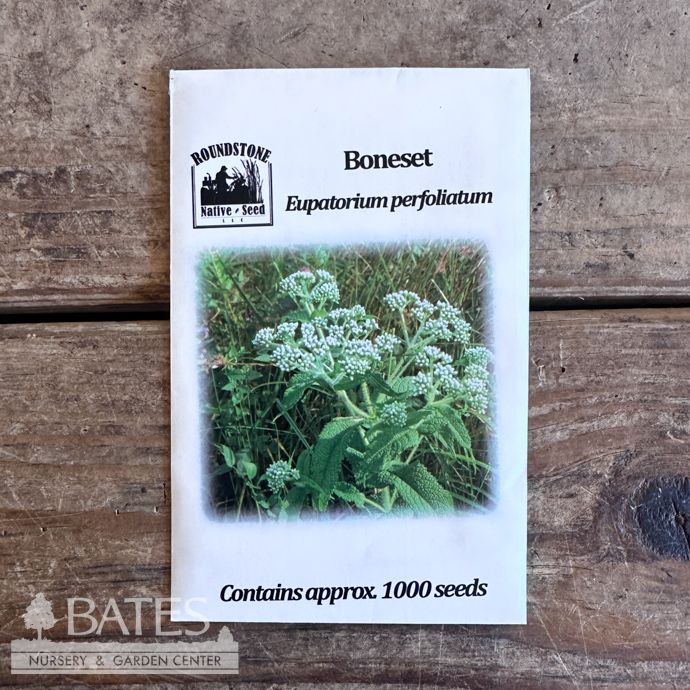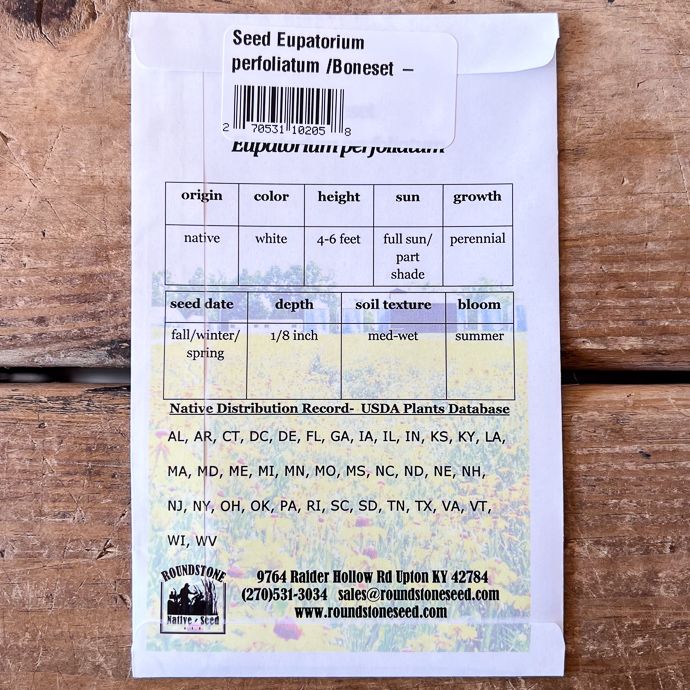Seed Eutrochium (Eupatorium) perfoliatum/ Common Boneset - Roundstone Native (TN)
Seed Eutrochium (Eupatorium) perfoliatum/ Common Boneset - Roundstone Native (TN)
SCIENTIFIC NAME: Eutrochium perfoliatum (formerly Eupatorium)
COMMON NAME: American Boneset
GARDEN SIZE: 4 to 6 feet tall x 3 to 4 feet wide
GROWTH RATE: Moderate
USDA ZONE: 3 to 8
EXPOSURE: Full sun to part shade
WATER & SOIL: Prefers moist, well-drained soil; average water needs, requiring additional water in drought conditions.
HABIT (FORM): Upright, clump-forming, hairy stems with distinctive perfoliate foliage
FOLIAGE: Deciduous; medium green, lance-shaped, opposite leaves with wrinkled texture that unite at the base to surround the stem
FLOWERS: Flat-topped clusters of small, fluffy white flowers (compound corymbs), July to September; good for cutting and drying
PLANT ORIGIN: Native to Southeastern United States including Tennessee; widespread in Missouri in low woods, streambanks, meadows, and prairies.
WILDLIFE SUPPORT: Excellent nectar source for butterflies, bees, and other pollinators. Provides seasonal cover for small wildlife and may support seed-eating birds. Host plant for local butterflies and moths.
FERTILIZING: Minimal; grows well in average soils. May give a root stimulant or 4-3-3 fertilizer during initial planting, then feed lightly in late winter or early spring with compost or an organic fertilizer if desired.
PRUNING: Cut back to just above soil level in early spring to encourage dense regrowth. Leaving stems, leaves, and spent blooms over the winter benefits native pollinators and wildlife.
TOXICITY FLAGS: All parts are toxic and bitter; historically used medicinally
USES: Rain gardens, native and wildflower gardens, pond edges, woodland gardens, borders, cottage gardens


